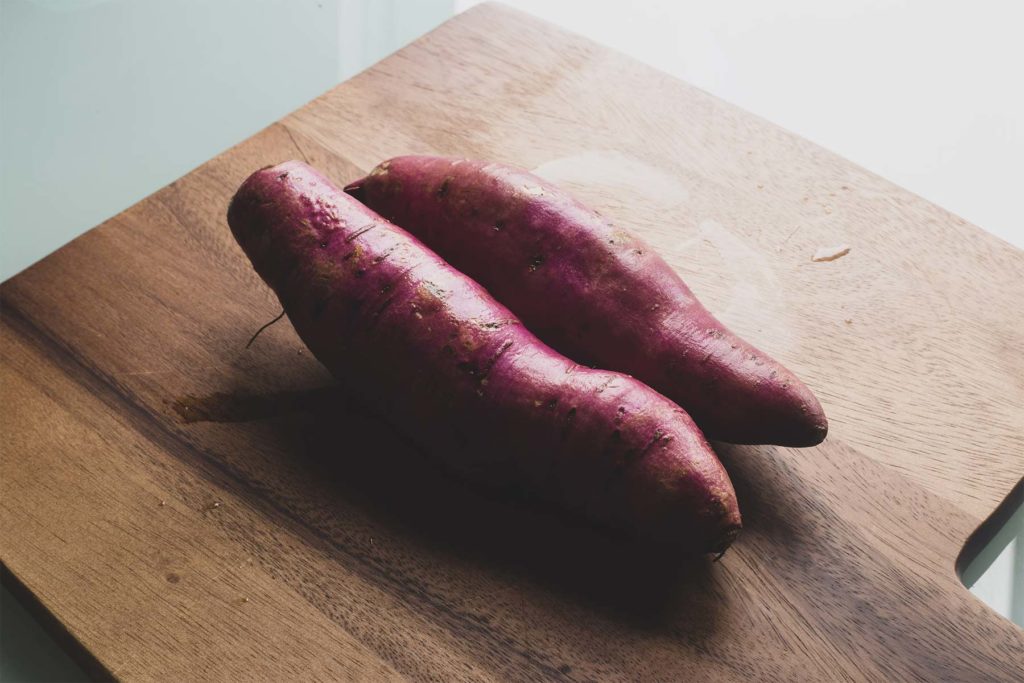
Sweet Potatoes
Immerse yourself in the fascinating world of the sweet potato: from its specific taste to its incredible nutritional benefits, from its cultivation to its many uses in the kitchen.
The sweet potato, often confused with the traditional potato, is a root vegetable that has carved out a place for itself on our tables. Colorful, tasty and nutritious, it’s much more than just a food. Let’s discover this exceptional tuber and its many facets.
Specificities and tastes of the sweet potato:
Contrary to what its name suggests, the sweet potato is not a direct relative of the potato. It actually belongs to the Convolvulaceae family. Its skin can be white, yellow, orange, red or even purple, while its flesh ranges from creamy white to bright orange and purple. The flavor of the sweet potato is, as its name suggests, sweet, with notes of hazelnut and sometimes a hint of spice.

How sweet potatoes grow and when to harvest them :
The sweet potato is a tropical plant that thrives in warm regions. It requires a long, warm growing season. Planting generally takes place in spring, after the last frost, and requires well-drained, loose soil rich in organic matter.
Sweet potatoes develop long, creeping stems and heart-shaped leaves. Tubers, or “spuds”, form under the soil in response to diminishing daylight. Harvesting generally takes place after 4 to 6 months of growth, just before the first autumn frost. Once extracted from the ground, they require a period of “healing” in a warm, damp place to develop their sweetness and improve their keeping qualities.
Culinary use :
Sweet potatoes’ versatility makes them a favorite in the kitchen. It can be boiled, roasted, fried, baked or even eaten raw.
- Sweet potato purée: Steam or boil sweet potatoes, then mash with butter, salt and a dash of cinnamon for a smooth, creamy purée.
- Sweet potato fries: Cut sweet potatoes into sticks, drizzle with olive oil, season to taste and bake until crisp.
- Creamy soup: Sauté onions and garlic, add sweet potato pieces and spices such as ginger. Cook until tender, then blend to obtain a creamy soup.
Sweet potato benefits and nutrition:
In addition to its delicious taste, the sweet potato is also a reservoir of health benefits. Rich in beta-carotene, it contributes to eye health and the prevention of chronic diseases. It’s also an excellent source of vitamin C, potassium and dietary fiber. Its orange color is indicative of its high antioxidant content. What’s more, sweet potatoes have a moderate glycemic index, making them suitable for a balanced diet.
–
The sweet potato is more than just a tasty vegetable to add to our diet. It’s a source of energy, health benefits and culinary delights. Whether roasted, mashed or in soup, sweet potatoes will charm you with their sweetness and nutritional richness. A true treasure of nature to be rediscovered!
